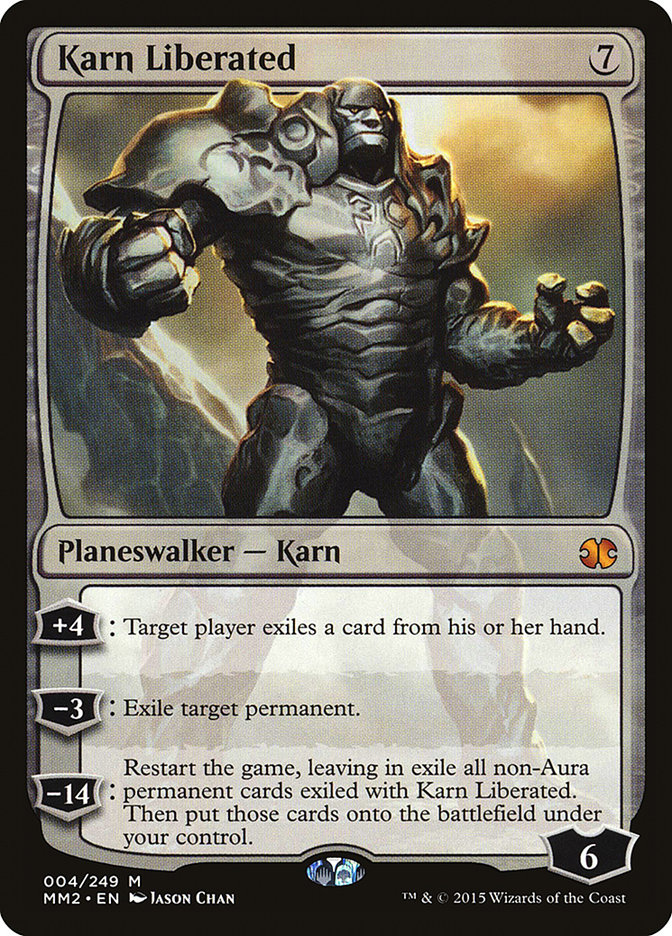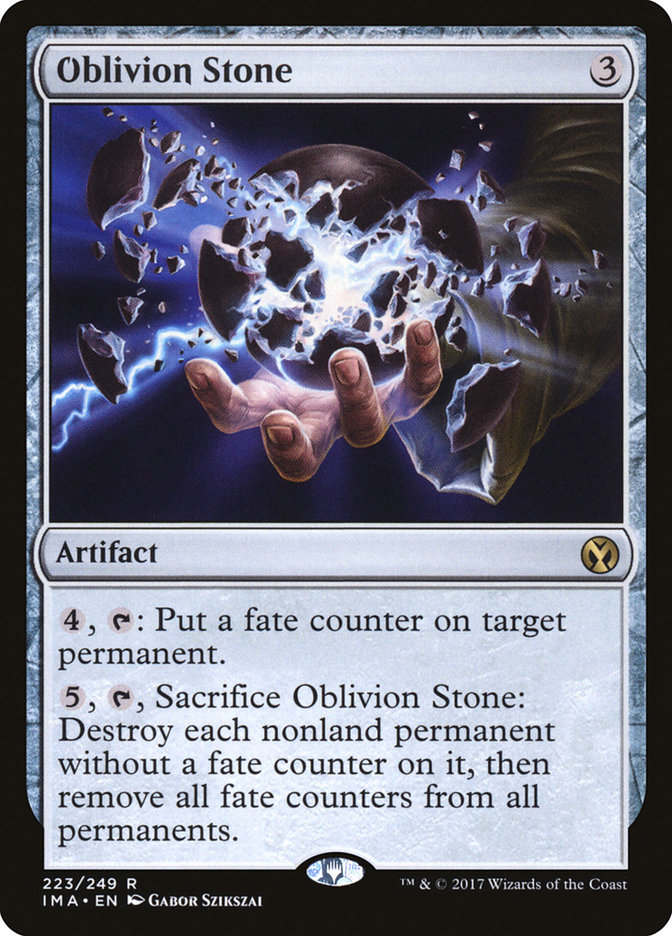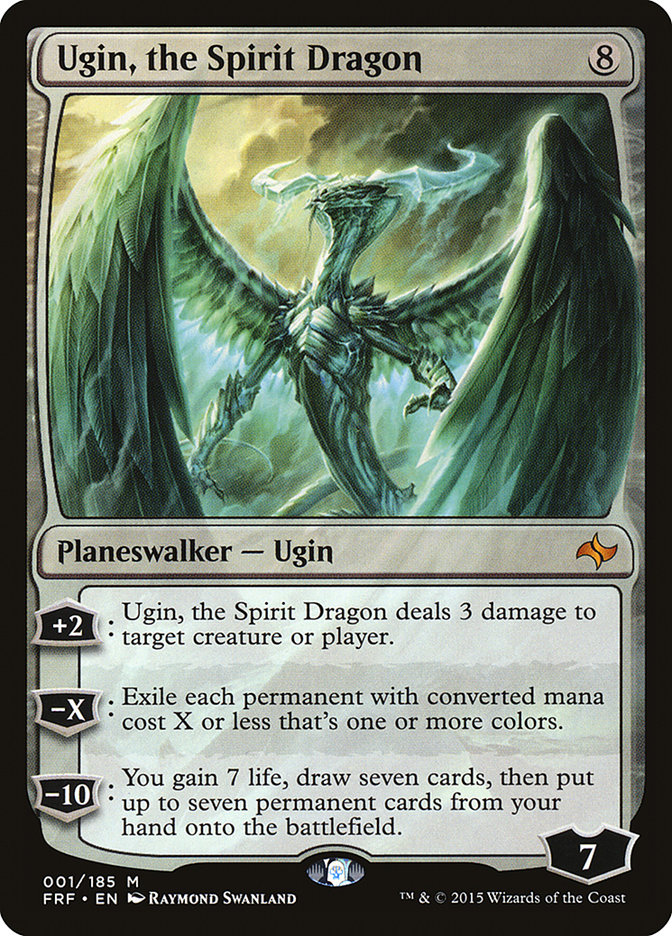There’s a old joke about broken formats where the early game is the
mulligan, the midgame is the first land drop, and anything past that is the
late game.
Modern isn’t quite that extreme but knowing how to mulligan might be one of
the most important skills in the format. Many games are decided by one or
both players keeping a subpar hand.
The synergies in Modern are absurdly strong. For most decks, the seventh
card is a luxury.
Plenty of hands are obvious mulligans. The trick is in determining where
the line is for hands that look functional but are failures and for what
hands are acceptable risks because they conditionally play out great.
What are the broken, conditional, and obvious failure draws for some of the
top decks in the format?
Humans
Creatures (37)
- 4 Meddling Mage
- 4 Noble Hierarch
- 4 Phantasmal Image
- 4 Champion of the Parish
- 3 Thalia, Guardian of Thraben
- 1 Restoration Angel
- 1 Kessig Malcontents
- 4 Mantis Rider
- 4 Reflector Mage
- 4 Thalia's Lieutenant
- 4 Kitesail Freebooter
Lands (19)
Spells (4)

Broken:

This has been stated multiple times over the past couple of weeks, both by
Emma Handy’s ”
Play Humans or Be Wrong
” and Cedric Phillips’ ”
Why Are You Still Sleeping On Humans?
“, but the good Humans hands start on turn one and spiral out rapidly from
there.
The weird part to me is that to exploit this you don’t really need a one
drop answer. While it does help sometimes, your one mana answers often are
better off targeting specific disruptive creatures or letting you chip away
at actual threats instead of Noble Hierarch. The only one drop that
basically commands an answer is Champion of the Parish, which honestly
points to it being the best one.
Conditional:

Humans has quite a few situationally good cards, but you aren’t winning
games off just casting some Reflector Mages without your baseline good
cards. There are matches you will just win via your anti-spell disruptive
elements however.
I think Meddling Mage on the play is good enough for me to consider non-one
drop hands with it that do sufficient other things, but Thalia, Guardian of
Thraben and Kitesail Freebooter are not. Thalia just doesn’t cut it when it
doesn’t catch your opponent with a million Ponders and Brainstorms in their
hand.
I also might just like hitting with Meddling Mage too much so your mileage
may vary.
I’m also a little more mulligan adverse with Humans than with other decks
despite Cedric advertising otherwise. Your individual cards don’t win games
on their own, and Aether Vial isn’t actually a full card once you mulligan.
Six card hands can be good, but rarely do you “still have all these” when
you win.
Failure:

These are good cards, don’t get me wrong, but the games where you just play
a mopey two drop into a mopey three drop are not the games you win.
Hollow One
Creatures (24)
- 4 Street Wraith
- 4 Bloodghast
- 3 Gurmag Angler
- 4 Flamewake Phoenix
- 1 Tasigur, the Golden Fang
- 4 Flameblade Adept
- 4 Hollow One
Lands (18)
Spells (18)

Broken:

The actual broken thing Hollow One does is produce four and five power
threats on turns one and two. The recursive creatures are largely
incidental, or just Flamewake Phoenix that requires you to make a big thing
in the first place.
Conditional:

Flameblade Adept can act as your big thing in a pinch but is conditional on
both mana expenditure and lack of otherwise dead removal. Because Hollow
One is often conserving extra lands, it’s hard to extend the resources to
Goblin Lore then return multiple Flamewake Phoenixes with your Flameblade
Adept, or you need an extra spell or Street Wraith to go with your
Faithless Looting to get to four power.
Double Flameblade Adept hands are pretty good. Single with no big doofus
gets way sketchier and rapidly becomes unkeepable without several recursive
threats to back it up.
One upside of Hollow One is these draws are pretty hard to exploit. The
Lightning Bolts and Fatal Pushes that are so good against Flameblade Adept
are uncastable against the rest of your deck. In sideboarded games, I would
expect these hands to be even better as those cards disappear from your
opponent’s deck and Adept ignores Rest in Peace.
The downside is your conditional hands are much worse after a mulligan.
Hollow One makes good use of extra raw cardboard via all the card
filtering. Burning Inquiry and Faithless Looting are both card negative, so
you can only fire them so many times a game and lose insulation for your
better cards on random discards. You can still do the real stupid stuff
short a card or two, but it’s hard to keep a Flameblade Adept going. A
five-card hand that might have Gurmag Angler is probably better than a
marginal six with a single Flameblade Adept.
Failure:

Don’t keep this.
You need your card filtering effects to setup your threats. You need to
cast your threats early enough to be a relevant goldfish clock. You need to
not randomly discard the threats you “drew” with that Goblin Lore.
Don’t trick yourself into spending mana to mulligan. The game lets you do
it for free.
G/W Hexproof
Creatures (12)
Lands (20)
Spells (28)

Broken Thing:

The broken draws from Hexproof obviously involve a Hexproof creature, but
an important part people miss is that you can’t just slap any Aura on it
and call it a success. You need to make a large enough threat to matter
that isn’t vulnerable to combat.
Daybreak Coronet does it. Ethereal Armor usually does it. Rancor is often
the key to piecing it together when those cards fail, but it needs help.
Conditional:

Non-hexproof threats are the conditional side of the deck. Dryad Arbor
takes a lot of work to make good enough to win with, but Kor Spiritdancer
is just going to get the job done almost every time if unopposed.
This is unfortunately where my expertise with this deck runs out. I think
whether you can keep these as your seven-card hands depends a lot on the
current metagame. With all the Jeskai Control decks, I wouldn’t want to
bank on a normal creature going the distance, but if there’s a surge in
Tron and Scapeshift they aren’t that likely to be able to stop Kor
Spiritdancer while being dead if it was a Gladecover Scout.
Of course, this is kind of backwards as I wouldn’t want to play Hexproof
into a room full of Big Mana decks, but that’s your choice, not mine.
Failure Mode:

The failure hands from Hexproof are the ones where you make a Hexproof
threat with Auras but you don’t build anything better than a Tarmogoyf. You
might beat a do nothing control deck with this hand, but Humans will easily
overwhelm you not to mention any combo deck.
You might still keep these hands because there are a lot of outs and
because Hexproof mulligans poorly due to only having eight Hexproof
creatures, but you will often lose with them. Don’t expect them to be that
good.
Jund
Creatures (14)
Planeswalkers (4)
Lands (23)
Spells (19)

Broken:

All of your nut draws with Jund are discard spell into two-drop. The same
applies to Mardu, G/B Midrange, or really any other deck trying to cast
Thoughtseize.
This is not a surprise to anyone who has played Magic over the last decade.
Conditional:

The conditional hands are largely the same, but with spot removal instead
of discard. You keep these, but it should educate you that Jund is not a
great deck to play into creature light metagames. Or really that Jund
heavily leans on its sideboard in those matchups, resulting in the classic
complaint about being unable to sideboard to beat everything at once.
Failure Mode:
Jund fails when it doesn’t have a threat.
Your deck is all one-for-ones. You don’t have a source of card advantage
outside of your threats. You play more lands then your opponent and can’t
really just start the action with Raging Ravine. You have lots of
situational cards pre-sideboarded. A prolonged game state of parity with
nothing on either side doesn’t necessarily favor you.
If you see a hand of four one-shot answers and three lands, you should
think a little more about it before keeping. While it might seem bad to go
down a card in your one-for-one deck, Dark Confidant, Tarmogoyf, and
Liliana of the Veil have your back.
Tron
Creatures (8)
Planeswalkers (6)
Lands (19)
Spells (27)

Broken :

Obviously you need to assemble an early Tron to make your Tron deck worth
playing.
Duh.
Turn three Karn Liberated is basically unbeatable.
Oddly, an early Oblivion Stone or Ugin, the Spirit Dragon is pretty
universally game over as well. Once you start thinking about Modern and the
banned list, it makes a lot of sense. The ways to kill people early just
using the stack are all banned. You need to present permanents to
accelerate your kill, and as a result Oblivion Stone stops basically
everything short of Ad Nauseam at which point you have time for any follow
up to close out. Ugin is similar, and though it misses a portion of the
metagame, the success rate is still absurd.
Conditional:

Your backup threats to Karn and sweepers are a little more conditional.
Wurmcoil Engine is just a doofus, Ulamog, the Ceaseless Hunger costs an
additional turn or two of mana, and everything else just isn’t even in the
same league.
The problem with Tron in this respect is that you can’t reasonably mulligan
for a better hand with Tron, so you’re at the mercy of whatever threat you
find.
Failure:

The failure hands with Tron often involve spending turns to cantrip into
your mana. Karn Liberated rapidly loses power when it starts facing down
multiple threats and Tron doesn’t have much interaction and just dies to
fast clocks some percentage of the time.
Tron is honestly the best deck at mulliganing in the format. While most
decks I would cave and keep a “failure” six, Tron just doesn’t care. It
takes four cards to cast a Karn, the fifth and six and be a Psychic Energy
and a Raigeki for all you care. Weird no Tron piece but selection sixes are
just not worth it.
Burn
Creatures (14)
Lands (19)
Spells (27)

Broken:

The good draws out of Burn all involve attacking on turn one. This usually
results in attacking multiple times with that creature and getting four or
more damage out of a single spell. When your normal spell-to-damage ratio
is three, that’s just great.
Conditional:

The all-spells, no-creatures hands with Burn are the conditional ones.
You’re going to win in a non-interactive way, but not very fast.
Failure:

Excess lands in Burn are basically mulligans. Your creatures can often
leverage an extra card worth of damage, but any four-land hand without a
creature is out of the question.
The question you should be asking is if the hand would be considered good
if any land past your second just didn’t exist. There’s a lot of hands
where the answer is yes, but anything close might be worth another shot.
The inverse happens with one landers. If the last card in your hand didn’t
exist, or any two drops past the first, would it be good? Goblin,Guide
probably still is enough to get a yes out of me, and maybe Monastery
Swiftspear, but one land all spells is not what I am aiming for.
Other Decks, Deeper Decisions
While drawing a clean line on broken hands looks nice on paper, it isn’t
the only thing going on. Play or draw can definitely matter and combine
with a specific matchup to change even a normally broken draw to an
expected failure.
Or take a deck like Jeskai Control that just doesn’t have a broken draw.
Unless you consider Serum Visions, Logic Knot, and some stuff a nut draw.
You’re basically admitting up front that any reasonable looking hand is a
keep and that your entire deck is conditional. That might be right for some
events, but it’s a real cost.
Really, the broader idea should stick though. There are plenty of other
matchups in other formats where your opening hand dictates whether you are
competing or not, Modern just has more of them.
A fun one from the last Pro Tour : R/B Aggro versus Mono-Red Aggro.
Broken:
Two-drop removal, a turn-three play, and a four-drop.
Conditional:
An aggressive curve. Conditioned on being on the play, or just them not
having your broken,hand against you.
Failure:
On the draw, Chandra, Torch of Defiance or Hazoret the Fervent as the curve
topper while missing a curve spot on the way up.
All answers but only one threat that isn’t a four-drop.



